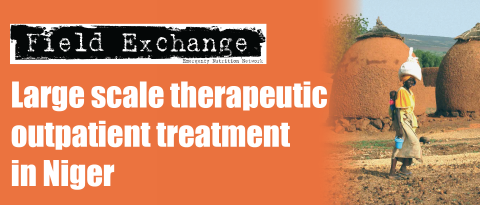Critical gaps in drought response in Greater Horn of Africa
Summary of published research1
The drought currently affecting an estimated 11 million people in the Greater Horn of Africa is said to be the worst in more than a decade, with the impact being most severe in pastoral areas on the Ethiopia-Kenya-Somalia border. Many humanitarian actors have expressed frustration that in spite of excellent early warning, most agencies, donors and national governments proved unable to address the crisis effectively in its early stages. A recent HPG briefing paper reviews the extent of emergency livelihoods responses in the region, drawing on secondary data and interviews with national and international actors in affected areas.
The review argues that the quality and credibility of early warning systems have not been called into question in this case. The progressive deterioration of pastoral livelihoods in the region was well documented. However, while aid actors with a long-term presence in drought-affected areas moved quickly to modify and scale up their interventions in response to the crisis, it was not until the situation was extremely acute that it attracted meaningful attention.
National and international actors with infrastructure and programmes in affected areas were flexible in rapidly adapting and expanding pre-existing livelihoods interventions in response to the crisis, e.g. water development and rehabilitation activities, herd survival actions, human and animal health assistance and cash interventions were possible right from the start of the emergency. Opportunities were not, however, taken to build on longer-term work by heavily frontloading the emergency response with livelihoods interventions. Food requirements constituted 85% of total needs identified under the Kenyan Flash appeal while 83% of the revised Somali Consolidated appeal process was for food assistance.
The review asks why was there such a disconnect between long-term programming and the emergency response. Three main areas are identified as problematic: inadequate preparedness, capacity imbalances between food and livelihoods programming and funding constraints.
Inadequate preparedness
Despite the cyclical pattern of droughts in this area, there are no national preparedness plans in Somalia or Ethiopia. Kenya is more advanced and has community and district level drought preparedness plans. The main constraint appears to have been the absence of national and sufficiently large local contingency funds to implement these plans rapidly on a large scale. The lack of effective coordination between district and national levels meant that these contingency plans did not form the basis of wider national and international responses. As a result, international actors largely bypassed national structures in each country. Since international actors also lacked pre-existing emergency plans for collective work, there was little consensus on the balance to be struck in the emergency response between preventive livelihoods interventions and food assistance.
Capacity imbalances between food and livelihoods programming
A key weakness was the lack of capacity for assessing, designing and implementing livelihoods interventions. Assessments were generally lacking the hard data that food assessments were able to provide to demonstrate potential life-saving impact. In addition, there appear to have been significant delays in planning for large-scale livestock related livelihoods interventions. Many donors, especially in Kenya, felt that plans for de-stocking were being submitted at a time when it was no longer appropriate to intervene to accelerate livestock off-take. Some agencies, particularly international relief organisations, also mentioned a lack of capacity to implement these programmes. Both implementing agencies and donors reported a dearth of innovative approaches: many claimed that the crisis was so severe that less established programming, such as cash transfers, were too risky. However, well-designed and timely livelihoods interventions were possible where agencies had longer-term programmes and an intimate understanding of the local context.
Funding constraints
Funding for livelihoods interventions was much lower than for food assistance. The difficulty of attracting donor funding for livelihoods projects was widely reported by humanitarian agencies, with donors in return indicating a lack of receptivity at headquarters to such interventions. This was reportedly due to an overload of requests for non-food resources globally, as well as a lack of contingency funding. Although the Consolidated Appeal for the Horn of Africa focused primarily on non-food interventions, it was not launched until April 2006 and was, in any case, critically under-funded.
Conclusion
Effective early warning does not ensure an adequate and timely response in slow onset disasters. Where agencies had a long-term presence and were flexible in redeploying funds earmarked for long-term activities, livelihoods interventions were implemented in a timely manner. It is essential that relevant national preparedness plans are in place in contexts where vulnerability is chronic and where acute crises are likely to develop. In order for these plans to be effectively put into operation, there must be investment in national capacity to implement emergency livelihoods programming on a large scale.
1Saving lives through livelihoods: critical gaps in the response to the drought in the Greater Horn of Africa. HPG briefing note. May 2006
Imported from FEX website


